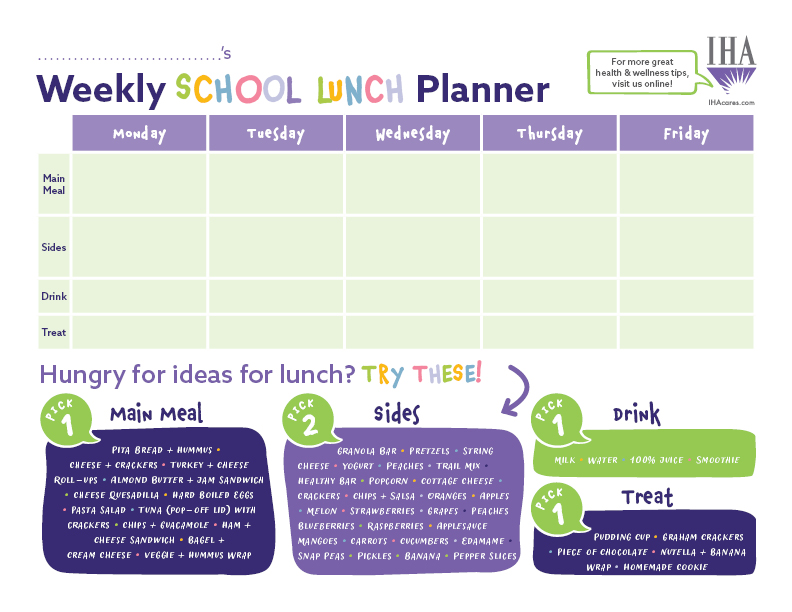
Sometimes school lunches can get boring – both for parents to make and for kids to eat. It’s pretty easy to fall into a lunch rut when packing lunch is just one of many tasks to check-off every morning. As you wrap up a month of another school year, we’ve got the recipe to keep boring lunches at bay.
Ditch the same old PB&J and try something new. We’re not suggesting rolling sushi in the wee hours of the morning. Keep it simple. Here are some of our lunch-time favorites:
• Hummus with pita bread and veggies for dipping
• Turkey slices rolled around a red pepper strip and cheese stick
• Whole grain mini bagel with cream cheese and sliced strawberries
• Tuna (with the pop-off lid) with cucumber slices and whole grain crackers
• Kebabs:
o Meat (cooked) with cheese and veggies
o Pieces of granola bar with fruit
o Waffles and fried chicken
o Grape tomatoes with mozzarella and basil leaves (don’t forget the balsamic vinegar drizzle!)
• Whole grain cereal, yogurt and blueberries
• A sliced hard-boiled egg, Canadian bacon and cheese on a whole grain English muffin
• Leftovers from dinner or soup in a thermal container
Include a note. Who doesn’t love a surprise? Wish your child good luck on a test, give them a pat on the back for a recent accomplishment, a note of encouragement or send a sweet message just because!
Use a fun lunch box. If the lunch box features your child’s favorite character or color they will enjoy bringing it to the table each day. Individual plastic containers are fun to fill and are a great tool to teach portion control, and keep things separated – Bento Box containers are a great option.
Be cool. Use a cold pack to keep food fresh and safe. They even come in fun colors!
Create a weekly meal plan. Have your child help plan their lunches each week. The planning process will help understand healthy eating by including a variety of food groups as well as encourage your child to try new foods (fingers crossed!). Get your weekly school lunch planner template here.

If you have any concerns around your child’s eating habits, connect with your pediatric provider. They’ll give you some food for thought.

